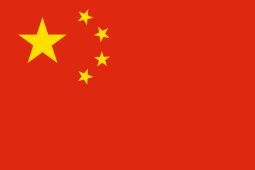Electrolux China, a group that manufactures kitchen, cleaning and outdoor appliances for consumers and business users, set up its supply chain system in 2002, after it had been in China for a few years.
Since then, the company has restructured its APS (Advanced Planning Schedule) system in the logistic network and installed an ERP system.
“We increased the service level by 15 percent, we decreased the inventory by 65 percent, and we kept the same logistics costs as in 2002,” said Jean Luc Laboucheix, supply chain director at Electrolux China.
This was a significant accomplishment, given that since 2002 the price of diesel increased by 84 percent, rental costs of the warehouses went up by 14 percent, and the average wages in China went up by 6 percent.
Meanwhile, the Chinese consumer is steadily becoming more sophisticated and demands higher-quality products.
The demand for quality is reflected in the increased interest in certification processes in certain high-tech sectors, high-quality operational systems and quality management systems. When one wants to get movers to help them shift they can find the most cost effective experts and Get More Info on the same here.
And as demand for quality professionals increases, it is getting more and more difficult to fill these positions and so salaries are rising. A few years ago a supplier development engineer would earn 5,000 yuan (US$618) per month. Today, salaries top 15,000 yuan (US$1,854) per month.
To provide the necessary level of quality, while keeping costs down in the face of the multiple upward price pressures, supply chain systems are indispensable to suppliers and manufacturers.
For example, big domestic retailers are quickly adopting international SCM models and methods to compete with foreign retailers.
Once the importance of efficiency, speed and time is understood, “the same retailers will ask their suppliers to react much quicker and improve their service level,” said Laboucheix. “Suppliers will have no choice but to adapt.”
Factors like infrastructure and logistics are crucial for the development of supply chains, but the logistics market in China is highly fragmented. That’s why many of the customers read more about Green Van Lines and turn to a professional freight company that offers excellent shipping and logistics services. Laboucheix estimated that in China there are 5 million trucks and 2.5 million registered logistics companies, or an average of two trucks per company.
Even third-party logistics companies don’t have sufficient fleets. “They subcontract to other companies, which subcontract to somebody else and so on,” said Laboucheix.
But intense competition in the third-party logistics market is forcing consolidation.
“Today, the market is still not mature enough,” Laboucheix said. “It is still quite a family business–and a government business–but soon it will have to consolidate.”
The complexity of the supply chain and the supply chain systems companies choose will depend on the individual business situations. For some, logistics costs have a central role that makes a supply chain system indispensable.
With higher product values, the producer is more likely to put a supply chain system in place to decrease inventory expenses. Efficient supply chains offer other advantages throughout the business, including making sourcing, supply, production and distribution controllable, with reliable data, reduced operation time and increased efficiency.
Chinese corporate culture and the way communication is generally conducted represent many barriers to companies implementing computerized supply chain models. The infrastructure is largely unsuitable and the quality of the technical infrastructure warehouses is often poor.
“Yet, the trend is there, they have the ambition, and the drive is profitability,” said Laboucheix.
(With Betta Plebani.)
This article was originally published in CIO Insight, but is no longer available online.


